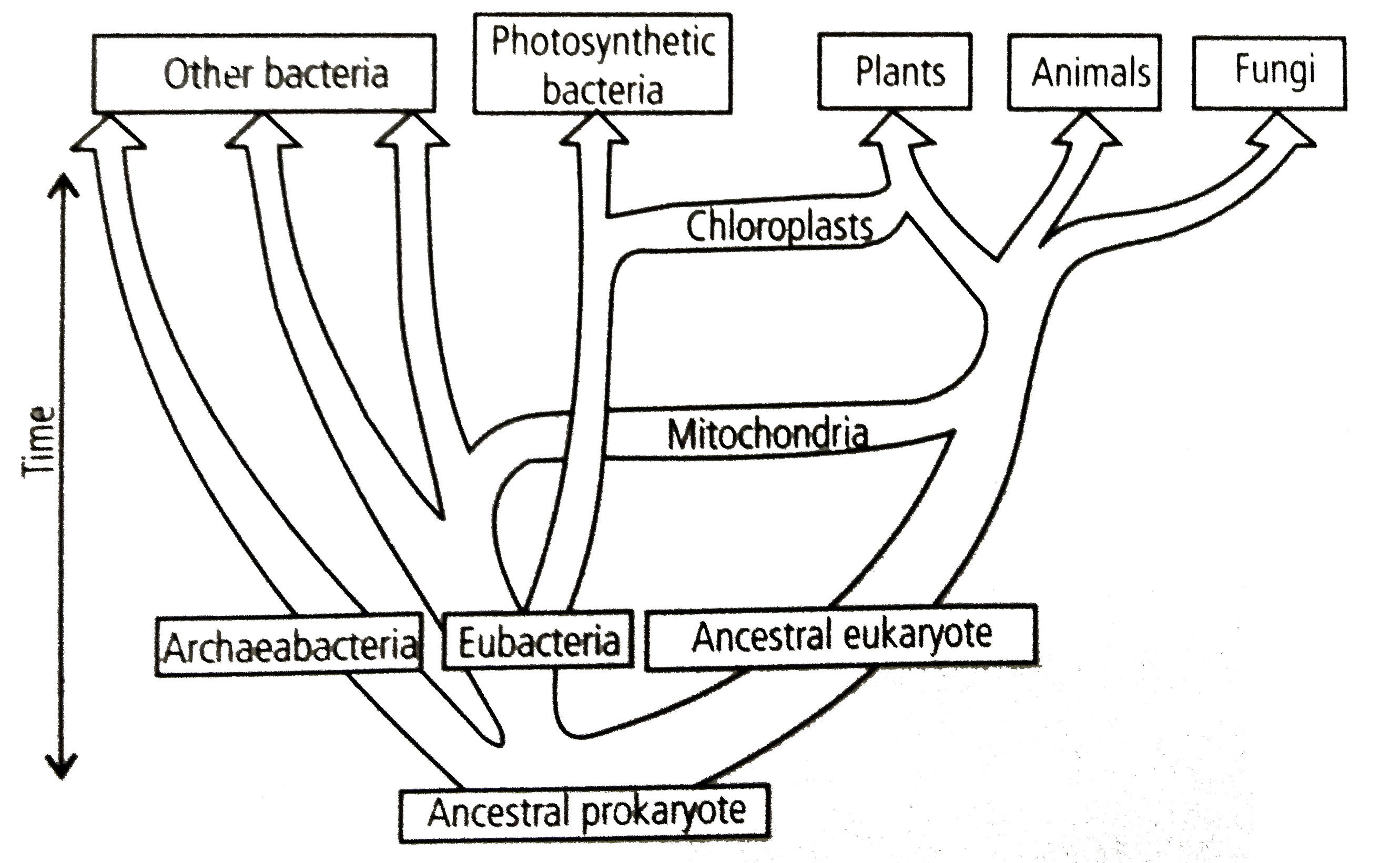Both mitochondria and chloroplasts
use a hydrogen ion (proton) gradient to produce ATP
obtain electron from water
reduce , forming NADP
release oxygen as a by product
The correct Answer is:A
Step-by-Step Solution:
1. Identify the Organelles: We are comparing two organelles: mitochondria and chloroplasts. Both are essential for energy processes in cells.
2. Common Features:
- Both mitochondria and chloroplasts are double membrane-bound organelles.
- They contain their own ribosomes.
- Both organelles have self-replicating DNA.
3. ATP Production:
- Both organelles are involved in ATP production.
- Mitochondria are primarily responsible for cellular respiration, while chloroplasts are involved in photosynthesis.
- The production of ATP in both organelles occurs through a process that involves a hydrogen ion (proton) gradient.
4. Enzyme Involvement:
- The enzyme ATP synthetase plays a crucial role in synthesizing ATP from ADP in both organelles.
- This process utilizes the movement of protons across the membrane.
5. Evaluate the Options:
- Option A: States that both organelles use a hydrogen ion (proton) gradient to produce ATP. This is correct.
- Option B: Claims both obtain electrons from water. This is incorrect for mitochondria, which obtain electrons from the oxidation of food.
- Option C: Suggests both reduce NAD+ to form NADP. This is incorrect as mitochondria reduce NAD+ while chloroplasts reduce NADP+.
- Option D: States both release oxygen as a by-product. This is incorrect; mitochondria release carbon dioxide, while chloroplasts release oxygen.
6. Conclusion: The correct answer is Option A, as both mitochondria and chloroplasts use a hydrogen ion (proton) gradient to produce ATP.
---
- Both mitochondria and chloroplasts are double membrane-bound organelles.
- They contain their own ribosomes.
- Both organelles have self-replicating DNA.
- Both organelles are involved in ATP production.
- Mitochondria are primarily responsible for cellular respiration, while chloroplasts are involved in photosynthesis.
- The production of ATP in both organelles occurs through a process that involves a hydrogen ion (proton) gradient.
- The enzyme ATP synthetase plays a crucial role in synthesizing ATP from ADP in both organelles.
- This process utilizes the movement of protons across the membrane.
- Option A: States that both organelles use a hydrogen ion (proton) gradient to produce ATP. This is correct.
- Option B: Claims both obtain electrons from water. This is incorrect for mitochondria, which obtain electrons from the oxidation of food.
- Option C: Suggests both reduce NAD+ to form NADP. This is incorrect as mitochondria reduce NAD+ while chloroplasts reduce NADP+.
- Option D: States both release oxygen as a by-product. This is incorrect; mitochondria release carbon dioxide, while chloroplasts release oxygen.
Topper's Solved these Questions
Similar Questions
Knowledge Check
The element that is not very mobile and remains fixed to mitochondria and chloroplasts is
ApotassiumBcalciumCsulphurDironGiven diagram illustrates an evolutionary tree.

Which of the following statements can be deduced from the given evolutionary tree?
(i) The ancestral eukaryotes were anaerobic.
(ii) All eukaryotes were anaerobic.
(ii) All eukaryotes possess mitochondria.
(iii) Eubacteria and Eukaryota have a common ancestor whereas Archebacteria have a unique and independent origin.
(iv) Mitochondria and chloroplasts have similar genomes.
(v) Mitochondria are presents in plants, animals and fungi.
(vi) chloroplasts and mitochondria arose asendosymbionts.
(vii) Fungi and animals lost chloroplasts during evolution.Aiii,v and viBi,v and viCii,iii,iv and vDi,v,vi and vii
The symbiont hypothesis suggests that there are similarities between prokaryotes, mitochondria, and chloroplasts like
View SolutionAssertion . Mitochondria and chloroplasts have their own genome
Reason . Endoplasmic reticulum and Golgi body are the cell organelles which have their own DNA
View SolutionAssertion : Mitochondria and chloroplasts are semiautonomous organelles.
Reason : They are formed by division of pre-existing organelles as well as contain DNA but lack protein synthesizing machinery
View SolutionThe mitochondria
View SolutionThe type of cell organelles that transform energy are:
(a) Chromoplasts and leucoplasts
(b) Mitochondria and chloroplasts
(c) Mitochondria and chromoplast
(d) Chloroplast and leucoplast
View SolutionThe type of cell organelles that transform energy are:
(a) Chromoplasts and leucoplasts
(b) Mitochondria and chloroplasts
(c) Mitochondria and chromoplast
(d) Chloroplast and leucoplast
View Solution
